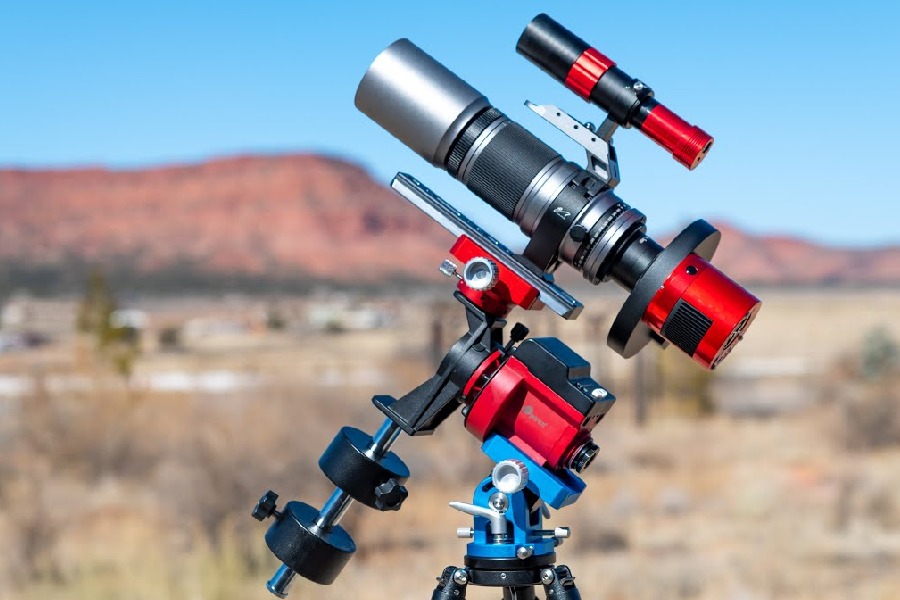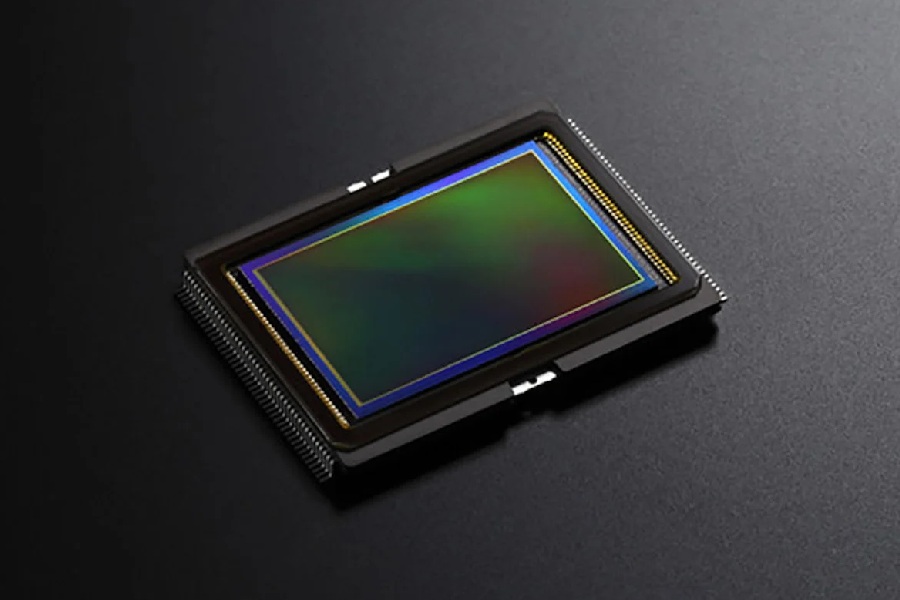When astronomers and astrophotographers aim their telescopes at stars or faint galaxies, they need stability. For any length of time, a piece of equipment called an autoguider becomes an essential accessory to provide precision aiming. But what is an autoguider, and how does it help improve viewing and imaging of celestial objects?
Let’s uncover the enveloping cosmos with a secret weapon that curtails distraction and unravels faults: autoguider for astrophotography.

What Is an Autoguider?
An autoguider is a device that helps stabilize telescopes over long exposures. It works by continuously monitoring the field of view and detecting unwanted motions. The autoguider then sends signals to the telescope to make gradual repositioning adjustments to keep targets centered.
Without an autoguider making these constant, tiny corrections, images become blurry as the equipment naturally drifts out of alignment with the stars. Autoguiders eliminate this disruptive effect for sharper astrophotography.
How do autoguiders work?
Autoguiders use a sensitive guide camera module to constantly view the patch of sky centered around the object being photographed. This guide camera has a wide field of view to monitor background stars and detect even tiny fractional amounts of motion in the imaging system.
When any movement or drift is observed, electrical signals are immediately sent from the autoguider to the motors controlling the telescope’s position. These instantly make very slight physical adjustments to the orientation of the mount or optical tube. This smoothly recenters and stabilizes the target to counteract detected drifts and frame the set exposure precisely.
Benefits of Autoguiding
Improving tracking accuracy
Manually guiding equatorial telescope mounts to counteract the rotation of the Earth is exceptionally difficult. Even slight deviations from the intended rate of motion will cause celestial views to gradually drift out of the field of view over time without constant manual adjustment. This requires tremendous vigilance.
In addition, the tracking accuracy required for long-exposure astrophotography is far beyond human capabilities to maintain manually for more than a few seconds. Uncorrected minor tracking errors quickly ruin photosensitive imaging. High-magnification eyepiece views will also rapidly move off target if not properly guided.
Image quality enhancement
Due to the motion artifacts introduced during long exposures, unguided images longer than 30 seconds will generally show star trails rather than pinpoints. This drastically limits the amount of clear detail that can be captured in each frame.
In contrast, the exceptional tracking accuracy provided by autoguiders makes exposures many times longer possible. Keeping exposures properly centered is also critical for resolution. By mitigating tracking errors and stabilizing the target’s positioning within successive exposures that may last 5, 10, 15 minutes or more, autoguiders allow exponentially greater light capture.
Hundreds of optimized exposures can also be stacked. More photons and sharper rendering reveal fainter structures. This results in dramatic, colorful images unveiling the amazing richness of our universe.
Autoguider Components
Guide star
A guide star is a relatively bright nearby star viewed through the autoguider’s guide scope. Guide stars serve as a stable point of reference for precision tracking. Having an unobstructed line of sight to guide stars in the image of the sky is essential for accurate autoguiding.
The autoguider carefully monitors any motion of the guide star’s position within the guide scope’s field of view throughout an astrophotography session. If movement is detected, instant signals are transmitted to the telescope’s mount to make appropriate slight corrections.
This keeps the main imaging target smoothly and firmly centered during exposures. Proper guide star selection and placement are necessary for peak autoguider performance.
Off-axis guider
Off-axis guiders use a prism within the telescope to divert some of the incoming light to a guide camera sensor. This allows guiding corrections to be made through the same optical path as the primary long-exposure astrophotography camera.
The guide camera provides key imaging input for position adjustments. While off-axis guides offer the simplicity and convenience of a single-scope solution, they can introduce some degree of light loss or interference. Dedicated guide scope setups with a separate camera provide the most robust and precise autoguiding performance possible.

Imaging chip or CCD sensor
Autoguiders leverage extremely sensitive CCD (charge-coupled devices) or CMOS (complementary metal-oxide semiconductor) imaging sensors. These photoelectronic chips instantly translate light photons from stars into digital data. This enables real-time input and analysis for guiding and drift correction decisions.
Ultra-precise and nearly instantaneous reactions to even subtle movements of the selected guide star completely depend on the sensitivity and data processing speed of the autoguider camera’s sensor chip. Thus, faster imaging sensors generally enable superior correction speeds and overall autoguiding accuracy.
Telescope Mounts for Autoguiding
Types of telescope mounts
Equatorial and German equatorial telescope mounts are considered ideal foundations for astrophotography and autoguiding. Their dual-axis rotational design allows smooth and steady celestial tracking critical for long-exposure imaging. Many premium mounts offer high-precision computerized GoTo pointing capability.
Although manual fine adjustment capability is also important for peak performance, altazimuth mounts can work for autoguiding when coupled with an equatorial tracking platform. By contrast, Dobsonian reflector telescopes are manually operated on simple yet sturdy altazimuth mounts better suited for visual astronomy.
Dobsonian mounts with electronic enhancements can conduct autoguiding by adding motors and vibrational dampeners. However, equatorial mounts are generally preferred overall.
General characteristics
- Precision-machined construction with minimum vibrational flexure
- Stepper motors capable of extremely fine positional adjustments
- Dual-axis drive capability for equatorial tracking
- Sturdy build quality to avoid tracking errors during exposures
- Vibration dampening features to enable smooth drive motions
Autoguiding Steps and Processes
Polar alignment
The Earth rotates daily on an axis that points near the North Star Polaris. Polar aligning an equatorial telescope mount properly positions its rotational axis parallel to the planet’s axis of rotation.
Achieving high precision with polar alignment is vital to allow the mount to track celestial motions smoothly and accurately. This is critical for astrophotography and autoguiding effectiveness.
Locating a suitable guide star
It is important to choose a sufficiently bright guide star located reasonably close to the main astrophotography target area when configuring autoguiding. The selected guide star should have a minimal number of nearby stars that could cause interference or confusion.
Optimally placing the guide star allows the autoguider to make the most appropriate drift corrections to keep the primary target neatly centered.
Connecting autoguider components
The scope guide should be securely attached to the mount and aligned parallel with the main imaging scope. Following this, the guide camera needs to be installed to guarantee a complete, vignetted view of the guide star. Ensure the proper connection through cabling between the guide camera module and the autoguiding computer interface.
Subsequently, check for seamless communication between the telescope mount motors and the primary camera. It is imperative to conduct thorough testing to verify proper communication between all components. Finally, power up the entire equipment set, ready for initiation.
Conclusion
What is an autoguider? As discussed, an autoguider is incredibly valuable in astrophotography by enabling ultra-precise telescope tracking.
Without the ongoing positional adjustments from an autoguider, long-exposure space images would quickly drift and blur despite the best manual efforts. But with smooth automated recentering enabled by an autoguider’s specialized cameras and software, new realms of breathtaking deep sky photography become achievable.
We hope appreciation is gained by revealing this vital accessory’s inner workings. It is for the critical difference an autoguider’s automatic precision guiding control provides astrophotographers. It assists them in their passionate quest to unveil the majesty of the cosmos.
